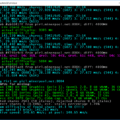The latest version of the T-Rex miner 0.15.4 with support for the KAWPOW algorithm for mining Ravencoin (RVN) and fixing a number of errors is already available for download at the links below:
Changelog:
v0.15.4
Bug fixes:
- Fix showing miner version info for mining pool
v0.15.3
- Add algorithms: kawpow (upcoming RVN fork), progpow, mtp-tcr
- Add SNI support for SSL
- Improve stat table (now showing percentage of rejected shares)
NOTE (RVN fork): In order for the miner to automatically switch to mining kawpow at the time of RVN fork, please make sure
- T-Rex is launched in watchdog mode (
--no-watchdogparameter should NOT be set in your bat file) - Your system clock is synchronised with a time server (The miner uses your system clock to check if it’s time to switch)
- Add
--fork-at kawpow=2020-05-06T18:00:00parameter to the miner start cmd line. If your pool changes ports for the new algo, make it--fork-at kawpow:3637=2020-05-06T18:00:00where3637is the new port the miner should switch to (replace it with the actual port number)
T-Rex – NVIDIA GPU miner
Overview
T-Rex is a versatile cryptocurrency mining software. It supports a variety of algorithms and we, as developers, are trying to do our best to make it as fast and as convenient to use as possible.
DevFee
Developer fee is 1% (3% for Tensority).
How to disable commission in the miner:
Supported algorithms:
- kawpow
- progpow
- x16rv2
- mtp
- x16rt
- x16r
- x16s
- x17
- x22i
- x25x
- x21s
- x11r
- geek
- bcd
- hmq1725
- honeycomb
- tensority
- dedal
- sha256t
- sha256q
- timetravel
- lyra2z
- bitcore
- sonoa
- renesis
- balloon
- polytimos
- skunk
- c11
- phi
- tribus
- GLT algos: astralhash, jeonghash, padihash, pawelhash
Runs on both Linux and Windows.
Usage
Usage
T-Rex supports command line arguments similar to that of ccminer:
x16r:
Code:
t-rex -a x16r -o stratum+tcp://eu.minermore.com:4501 -u-p x
MTP:
Code:
t-rex -a mtp -o stratum+tcp://xzc.2miners.com:8080 -u-p x
To get the full list of supported options run:
Code:
t-rex -h
Full list of command line options:
-a, --algo Specify the hash algorithm to use.
astralhash
balloon
bcd
bitcore
c11
dedal
geek
hmq1725
honeycomb
jeonghash
lyra2z
mtp
padihash
pawelhash
phi
polytimos
sha256q
sha256t
skunk
sonoa
tensority
timetravel
tribus
x11r
x16r
x16rt
x16rv2
x16s
x17
x21s
x22i
x25x
-d, --devices Comma separated list of CUDA devices to use.
Device IDs start counting from 0.
--ab-indexing Afterburner indexing (Sort devices by bus ID. First device starts with 1).
-i, --intensity GPU intensity 8-25 (default: auto).
-o, --url URL of mining server.
-u, --user Username for mining server.
-p, --pass Password for mining server.
-r, --retries Number of times to retry if a network call fails.
-R, --retry-pause Pause in seconds between retries.
-T, --timeout Network timeout, in seconds (default: 300)
--time-limit Miner shutdown interval in seconds. (default: 0 - disabled)
--temperature-color Set temperature color for GPUs stat. Example: 55,65 - it means that
temperatures above 55 will have yellow color, above 65 - red color. (default: 67,77)
--temperature-limit GPU shutdown temperature. (default: 0 - disabled)
--temperature-start GPU temperature to enable card after disable. (default: 0 - disabled)
-b, --api-bind-telnet IP:port for the miner API via telnet (default: 0.0.0.0:4068). Set to 0 to disable.
--api-bind-http IP:port for the miner API via HTTP (default: 0.0.0.0:4067). Set to 0 to disable.
-J --json-response Telnet API server will make json responses.
-N, --hashrate-avr Sliding window length in seconds used to compute average hashrate (default: 60).
--sharerate-avr Sliding window length in seconds used to compute sharerate (default: 600).
--gpu-report-interval GPU stats report frequency. (default: 5. every 5th share)
-q, --quiet Quiet mode. No GPU stats at all.
--hide-date Don't show date in console.
--no-color Disable color output for console.
--no-nvml Disable NVML GPU stats.
--no-watchdog Disable built-in watchdog.
-B, --benchmark Benchmark mode.
-P, --protocol-dump User protocol logging.
-c, --config Load a JSON-format configuration file.
-l, --log-path Full path of the log file.
--cpu-priority Set process priority (default: 2) 0 idle, 2 normal to 5 highest.
--autoupdate Perform auto update whenever a newer version of the miner is available.
--back-to-main-pool-sec Forces miner to switch back to main pool in case working with failover pool.
Parameter is set in seconds. (default: 600)
--exit-on-cuda-error Forces miner to immediately exit on CUDA error.
--exit-on-connection-lost Forces miner to immediately exit on connection lost.
--reconnect-on-fail-shares Forces miner to immediately reconnect to pool on N successively failed shares (default: 10).
--fork-at Forces miner to change algorithm on predefined condition.
Time condition: algo_name=YYYY-MM-DDTHH:MM:SS (eg: --fork-at x16rv2=2019-10-01T16:00:00).
Time must be set in UTC+0.
Block condition: algo_name=integer_block_number (eg: --fork-at x16rv2=6526421).
To change main pool port you must write it right after algo: algo_name:integer_port_number (eg: --fork-at x16rv2:4081=2019-10-01T16:00:00).
--version Display version information and exit.
-h, --help Display this help text and exit.
JSON config file
To start T-Rex with config file config.txt type in the console: t-rex -c config.txt. Use config_example file as a starting point to create your own config. You can also use environment variables: simply put %YOUR_ENV_VAR% anywhere in your config file and it will get automatically substituted with the value of YOUR_ENV_VAR variable at run-time.
Watchdog
Watchdog is intended to observe miner state and restart T-Rex if it crashes or hungs for any reason. Also, watchdog can optionally perform auto updates if a newer version is available. We recommend using the watchdog to avoid any downtime in mining and make sure your GPUs are busy 24/7. If you do need to disable the watchdog, you can do so using --no-watchdog parameter.
HTTP API
By default HTTP API server binds to 0.0.0.0:4067. It means that you can access your miner via both external and internal network interfaces. Common example of request structure: http://your_ip:your_port/handler_name
- trex – Shows miner control monitoring page in your web browser. You can see miner stats realtime and also change miner parameters and config on the fly. Also here you will see updates in case it appears. To activate the handler navigate to
http://127.0.0.1:4067/trexusing a web browser. - log – Displays the contents of the log file (if configured). To activate the handler navigate to
http://127.0.0.1:4067/logusing a web browser. - config – Changes your config on HDD and also change some miner parameters on the fly. You can change multiple parameters with one request. GET and POST requests supported. If you use config (started miner like this: t-rex.exe -c config_file) then any action with handler “config” will be saved into selected config_file. You can use this handler for automatization purposes like changing config at runtime, shutting down the miner via API and then restarting it with new parameters applied. GET usage examples:
http://127.0.0.1:4067/config?protocol-dump=true– Enables protocol dump on the fly and write it into config_filehttp://127.0.0.1:4067/config?algo=x16r&devices=0,1&intensity=20,21– Will write the following config settings into the config file:algo=x16r,devices=0,1,intensity=20,21http://127.0.0.1:4067/config?algo=x16r&devices=0,1&intensity=20,21&config=test.conf– Saves settings into the filetest.confwhich will be created in the folder where the miner resides.algo=x16r,devices=0,1,intensity=20,21http://127.0.0.1:4067/config?config=test.conf– Saves your current miner settings intotest.conffilehttp://127.0.0.1:4067/config– Shows the current config statehttp://127.0.0.1:4067/config?hashrate_avr=10&temperature-limit=70&temperature-start=40– Sets the following parameters on the fly:hashrate_avr=10,temperature-limit=70,temperature-start=40For POST requests you must use correct json object with parameters you want to change. URL:http://127.0.0.1:4067/config. Payload:{"hashrate_avr": 10, "temperature-limit": 70, "temperature-start": 40}. Parameters’ names and types in json are identical to config json you normally use.
- summary Shows all information about current mining process. To activate the handler navigate to
http://127.0.0.1:4067/summaryusing a web browser. - do-update Activate download update service. To start T-Rex update type in the following into your browser address bar and hit Enter:
http://127.0.0.1:4067/do-update. To stop update type in the following into your browser address bar and hit Enter:http://127.0.0.1:4067/do-update?stop=true - control Real time configuration of T-Rex miner. As of API 1.3 version there are following commands supported. shutdown – Shuts down your miner. Usage:
http://127.0.0.1:4067/control?command=shutdown. If you prefer POST set the request body to{"command": "shutdown"}. hashrate-avr – Changes sliding window size in real time. Usage:http://127.0.0.1:4067/control?hashrate-avr=1. It will set sliding window of size 1 sec. If you prefer POST set the request body to{"hashrate-avr": 1}. gpu-report-interval – Changes frequency of GPUs reports appearance in log. Usage:http://127.0.0.1:4067/control?gpu-report-interval=10. Now you will see GPUs stats every 10th share. If you prefer POST set the request body to{"gpu-report-interval": 10}. Btw, you can disable stats (enter quiet mode) by setting gpu-report-interval to 0. no-color – Disables color output to console. Usage:http://127.0.0.1:4067/control?no-color=true. To enable:http://127.0.0.1:4067/control?no-color=false. If you prefer POST set the request body to{"no-color": true}. protocol-dump – Enables user protocol dump into console/log. To enable:http://127.0.0.1:4067/control?protocol-dump=true. To disable:http://127.0.0.1:4067/control?protocol-dump=false. If you prefer POST set the request body to{"protocol-dump": true}. time-limit – Sets time limit in seconds for miner (it will shutdown after timeout). Usage:http://127.0.0.1:4067/control?time-limit=120. It will shutdown your miner 120 seconds after this request. To disable:http://127.0.0.1:4067/control?time-limit=0. If you prefer POST set the request body to{"time-limit": 120}. - file Creates a file in directory with the miner. This may be useful for external monitoring utilities or scripts which can take commands from this file and do some sort of useful stuff like overclock or system reconfiguration.
http://127.0.0.1:4067/file?name=test.txt&data=some_sort_of_text_dataIf you prefer POST set the request body to{"name": "test.txt", "data": "some sort of text data"}
Antivirus alerts
In order to protect the miner from reverse engineering attacks, the binaries are packed using a third-party software which mangles the original machine code. As a result, some antivirus engines may detect certain signatures within the executable that are similar to those that real viruses protected by the same packer have. In any case, it is advisable not to use cryptocurrency miners on the computers where you store your sensitive data (wallets, passwords etc.).
Tips
In order to maximise the hashrate our software utilises all available GPU resources, so it is important that you review your overclock settings before you start mining. Our general recommendation is to start from GPU stock settings (no overclock, default power limit), and then after making sure it is stable, slowly increase your overclock to find the “sweet spot” where the miner performs at its best and still does not crash.








